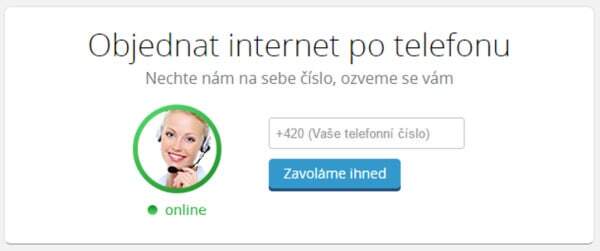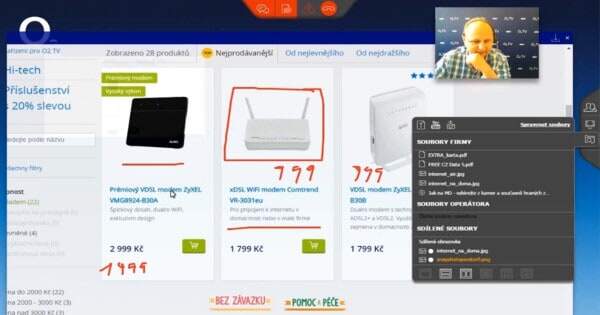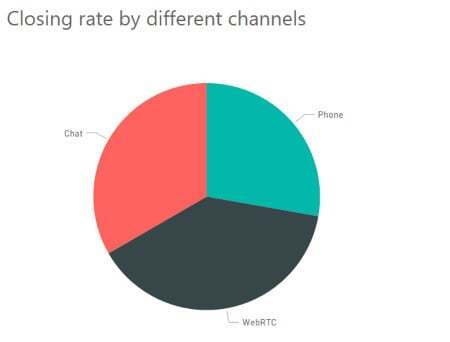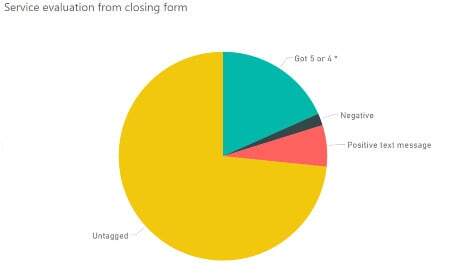Contact centers are the main adopters of WebRTC still. This is clearly reflected by my infographic of the WebRTC state of the market 2017.
Motto:“This ‘telephone’ has too many shortcomings to be seriously considered as a means of communication. The device is inherently of no value to us.”
Western Union telegraph company memo, 1877.
Think you know how WebRTC fits in a contact center? Check out with The Complete WebRTC Contact Center Uses Swipefile
Recently, Jaroslav from iCORD, told me the stats they now see from the contact center deployment they have in O2 Czech Republic, who also happen to be their parent company.
How is O2 CZ making use of WebRTC in their Contact Center?
What they did isn’t the classic approach you will see to WebRTC in contact centers, but rather something slightly different. If you are a customer of O2 CZ and you are thinking of making a purchase on their website, you have the option to leave a number for them to immediately get back to you:

And yes – there is also an “exit intent” on that sales page, so if try to leave this page, it will appear as a popup.
How is a phone call related to WebRTC you ask? Well… it isn’t. Unless you factor in the fact that we now know what web page the user is on.
What happens next, is that a contact center agent will call back to the user, and the user will see something new on his browser – a shared space between him and the agent that just called him.
This shared space will enable the agent to browse the same page the customer was on, and move on from there elsewhere. It also includes annotations – the agent can draw or mark things on the screen. One last thing – the user will see the video of the agent, but will not share his video.

See? They even haggle and write down discount prices right on the webpage.
Now, if the interaction started with a phone call, the agent in the contact center can instruct the customer to go to the O2 CZ website and enter a PIN code there – and magically get to the same experience.
Here’s a diagram to show the communication channels we now have between the customer and the contact center agent:

Why this approach?
- Customers continue using the phone. Same way they did in the past
- There’s no reliance on the customer’s camera, microphone or muted speaker volume
- It got stitched right into the existing contact center O2 CZ already had in place
The results
But was this effective? Was it worth the effort?
O2 CZ have been running this contact center service throughout 2016, and took the time to analyze the results. They did so only for sales related calls – the money makers.
Here’s what they found out:
Using this approach is much more efficient than a simple phone call.
Let’s stop right here for a second and soak that statement.
We’re talking about a contact center.
Of a mid-sized European carrier (4 million subscribers).
The type of those where I am told over and over would NOT adopt WebRTC because it does not support Internet Explorer 4. Oh. And this specific service falls back to Flash if the customer’s browser doesn’t support WebRTC and even decreases further in feature set to static screenshot and PDF file sharing for those who don’t even support Flash.
And they are already doing it for a full year.
Successfully.
In production.
In front of live customers.
Who would have thought a non-startup company that isn’t located in Silicon Valley and operated by 16-year olds would be able of doing such a ridiculous thing like deploy WebRTC in production directly to where money gets negotiated with customers.
— end of rant —
Back to the results.
Call length on average dropped
It takes 30% less time to negotiate and close a deal than a regular phone call and considerably shorter than text chat. This may seem a bit backwards – the fact that chat takes the longest and a video session the shortest, but that’s the experience of this contact center.

How about succeeding to close a deal and make a sale? WebRTC gets closed deals 25% more than regular phone calls. Chat is slightly less successful than WebRTC but more successful as phone. These values were measured on session landing at sales agents’ desk once those irrelevant and redirected were filtered out.

And the customer satisfaction? Over 20% rate the service 5 stars at the end of the interaction and 7% left positive textual evaluation of the service. Compared to the traditional IVR system that’s really high.

Where does this lead us?
- There are many ways to deploy WebRTC in a contact center
- WebRTC is already being used by contact centers – successfully
- Done right, there’s huge value in adding WebRTC to your customer engagement. It adds efficiency and improves customer satisfaction, resulting with higher value to both sales and care
And if you are looking for more information about the O2 CZ deployment details – especially the technical ones, Jaroslav will be happy to have a conversation with you.
